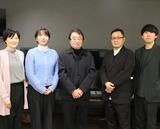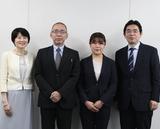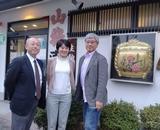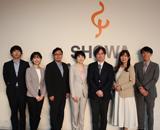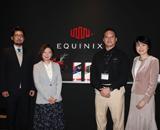September 2014
Datsun: Opening the Path to Emerging Countries' Markets -Designing UX, the Sales Tablet Tool - Nissan Motor Co., Ltd
Practical Use of the Tablet: "Visible" and "Peace of Mind"
Sato: About the tablet tool, what kind of expectations did you have in mind in its planning phase?
Izumi: We emphasize the following keywords: "visible," "easy to understand," and "peace of mind" to provide a sense of security through the experience of services worthy of your trust. It will be the first car for many prospective buyers in emerging countries. So, before they go out on a test drive, it is important to deepen their understanding of our cars, build up their interest in them, and materialize the "visible" and "peace of mind" aspects. During negotiations, the tablets contain much more information than the catalogues we used until now, and it is important to convey an advanced sensation of what the car feels like. This is why we planned this tool.
Nakagawa: New salespersons have been employed for the occasion, and many of them are working in the automotive industry for the first time. Therefore, we wanted a tool they can utilize fully to best convey the Datsun brand and our cars' attractiveness, and finally leading to sales.
Morisawa: The idea of using tablets as sales tools had been floating around for some time. Still, it is difficult to suddenly shift to using a tablet, since the sales process using paper tools is so well established. With Datsun, we are approaching new markets with a new brand and new people, so it felt like the most appropriate occasion to take up new challenges and decided to try implementing this new process.
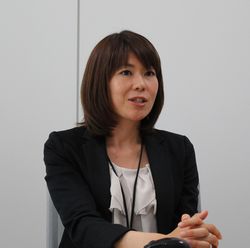
Ohsato: When assisting our clients in their globalization through Web services, we noticed that emerging countries definitely have some special characteristics, from their Web environment to user literacy. They often differ a lot from Western and advanced countries, and the introduction of a new tool could bring out more challenges. Did you experience any trouble on that particular front?
Oteki: Conveying an impressive image of the car is crucial, so we needed large amounts of visual data. However, as you mentioned earlier on, the telecommunications environment is very different from that of Japan, sometimes very slow or unstable, so a network functioning on an online basis represented too much of a risk. Therefore, we decided that having all the data available locally on the tablet was a prerequisite. Also, we couldn't implement usage of the UX if the operation of the tablet became choppy because of data processing problems, or because we had to reduce image quality so as to avoid that particular threat. So we all racked our brains and went on, through earnest trial and error. (Laughs)
Shibata: By the way, have such mobile tools penetrated the Indian and Indonesian markets?
Izumi: The level of market penetration depends on the country. Indonesia is the world's largest BlackBerry market, while in India smartphones have only spread to one class of its population. However, although it isn't anywhere near the present condition in Japan, many domestic mobile terminal manufacturers have started to appear and it seems they are boosting their popularity, so I don't think it calls for alarm. In our industry, Nissan appears to be the first to use tablets for sales activities in India and Indonesia, and taking the lead in introducing new devices could become a hot topic which, we hope, will help build the Datsun branding image.
The Implementation of UX
Sato: Next, I would like to talk about our work together.
Oteki: In the process of deciding on the final design, we made a major change in the direction we were working towards. That was a fairly tough decision to make, but thinking back, it was quite fun too. (Laughs)
Nakagawa: After seeing the initial design, we improved it further from the perspective of whether we could sell cars with this tool. We went to stores, redid our research on dealerships, wrote a detailed "user story", and reviewed the functions from the viewpoints of those who would be using it. And by doing this, we managed to create a significantly better tool.
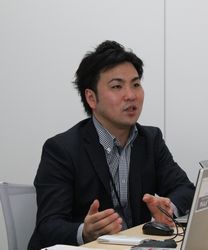
Shibata: We were in charge of planning the transition, designing the screen interface, effects, etc. Laying out an intricate hierarchy like on a website would be confusing and wouldn't allow to easily grasp the current position, so we suggested a more simple structure. In order to avoid the confusion caused by "Next"/"Previous" buttons, we suggested to opt for being able to exit the current page, and keeping data completed even after resetting the current process. Regarding the design of the screen interface, we thought of a layout that can convey the car's size and its vibrant design as much as possible, developed a function allowing a 360° view of the interior, and offered a method to bring all this together to function so that the car's movements and the page transitions operated smoothly. We strived to make it both practical and visually compelling to give the best feel for the car.
Nakagawa: This time, we didn't only need a design, it was also important to materialize the UX. Then, someone we worked with suggested collaborating with Arc. So, with high expectations, we contacted you. And Arc undoubtedly met these expectations.
Morisawa: During the design phase, I saw the proposed concept and thought, "That makes perfect sense!" We were very thankful that during the trial and error phase (Laughs), your response - down to our smallest requests - was so speedy and you were able to deliver on time despite the tight schedule.
Oteki: The design you produced was very much to our satisfaction. I am especially pleased with its simple layout, free from any superfluous information.
Sato: Thank you very much. For us too, this really was a valuable project. Our work stopped in the design phase, but could you tell us more about the development and current situation?
Morisawa: We have already launched it in India and Indonesia. However, we have been working on adding extra functions, so it should take a little more time before we actually reach full deployment. Development for South Africa and Russia is about to start and since the tools themselves are ready, we will mainly be replacing languages and data.
Nakagawa: The demand for developing this tablet tool is on the rise for the NISSAN brand too, so this initiative has caught people's attention in various ways. We only just started using it, so first we would like to see it become well established within the Datsun brand before starting to work on further expansion.
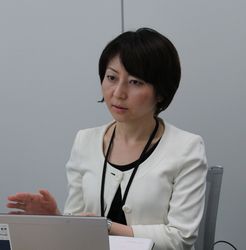
Ohsato: I don't think a time when paper will be completely replaced by digital devices will ever come, but I do believe that being able to provide various virtual experiences to customers with the UX is full of promises. Especially in the automotive industry, I feel providing digital user experiences to customers will greatly contribute to future sales. If there are any news about the UX, please let us know. Thank you very much for your time today.
Feature Interview Index

